








Biplanes, unsung heroes of the inter war years and WWII Part 2By Willie Bodenstein Except for the Fokker Eindecker, the biplane reigned supreme during WWI and was set to do so until the late 1930s when the age of the monoplane dawned. The capitulation of Germany might have brought an end to WWI however, across the globe, various smaller wars continued and fighting for air supremacy biplanes were still a common sight in the skies over central Europe. 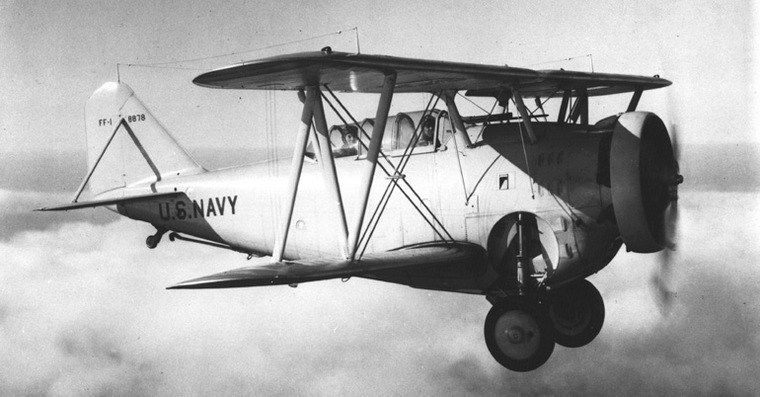 Grumman FFI. Photo © US Navy / Wikipedia.org The Grumman FFI an American biplane fighter aircraft operated by the United States Navy during the 1930s and first flew on 29 December 1931. It was produced under licence in Canada and known as the Goblin in Canadian service. Like many other military aircraft of that time, it had its baptism of fire called the Delfin and was flown by the Spanish Republican Air Force in the Spanish War. FFI were outclassed by opposing fighters and losses were high. Despite this, a victory against a Heinkel He 59B would be the only recorded "kill" by a Grumman biplane fighter. Eleven survived to serve in the Ejército del Aire Español.  Henschel Hs 123. Photo © British Air Ministry/ commons. Wikipedia The Henschel Hs 123 introduced in 1936 was a single-seat biplane dive bomber and close-support attack aircraft flown by the German Luftwaffe during the Spanish Civil War, the second Sino-Japanese War and the early to midpoint of World War II. It proved to be robust, durable and effective especially in severe conditions. Combat evaluation of the Hs 123 during the Spanish War demonstrated a remarkable resiliency in close-support missions, proving that the 123 was able to absorb a great deal of punishment including direct hits on the airframe and engine. Twelve Hs 123s were exported to China, where they were used extensively as dive bombers by the 15th Squadron of the China Central Air Force Academy Group, operating during 1938 against Imperial Japanese warships along the Yangtze River. The Hs 123 continued to see front-line service until 1944, only to be withdrawn due to a lack of serviceable airframes and spare parts. 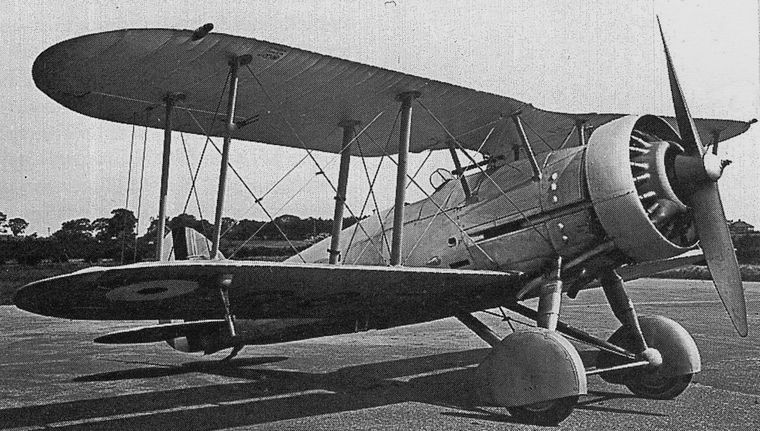 Gloster Gauntlet. Photo © TSRL / British Flight Testing  Gloster Gladiator. Photo © commons.wikimedia.org The Gloster Gladiator, a British-built biplane fighter, the RAF's last biplane fighter aircraft, first flew on 12 September 1934. It was used by the Royal Air Force and the Fleet Air Arm as the Sea Gladiator variant and was exported to a number of other air forces during the late 1930s. However, it was rendered obsolete by newer monoplane designs even as it was being introduced. Though often pitted against more formidable foes during the early days of the Second World War, it acquitted itself reasonably well in combat. The Gladiator saw action in almost all theatres during the Second World War, with a large number of air forces with some on the Axis side. The RAF used it in France, Norway, Greece, the defence of Malta, the Middle East and the brief Anglo-Iraqi War. Other countries deploying the Gladiator included China against Japan, Finland (along with Swedish volunteers) against the Soviet Union, Sweden, Norway, Belgium and Greece. The RAF's 72 Squadron, based at Tangmere operated the type until April 1939. South Africa's Marmaduke "Pat" Pattle was the top Gladiator ace with 15 victories with the type.  Fiat CR.42 Falco. Photo © en.wikipediea.org Italy's Fiat CR.42 Falco first flew on 23 May 1938 and was taken into service the flowing year serving with the Italian Airforce until 1939 and the Spanish Airforce until 1948. With more than 1,800 built, it was the most widely produced Italian aircraft to take part in World War II. It also served in the air forces of Belgium, Sweden and Hungary. Immensely strong and relatively agile in flight the Falco was none the less outclassed by faster, more heavily armed monoplanes. When Italy entered the Second World War on the side of Germany, roughly 300 Falco's had been delivered. By 8 September 1943, the day on which Italy formally surrendered to the Allies, only around 60 of these aircraft were still in a flyable condition. In East Africa, the Fiat fighters were responsible for the destruction of a large number of RAF and South African Air Force (SAAF) aircraft, both in the air and on the ground, including a number of Hurricanes. It was in the North African theatre that the CR.42 performed at its best. Experienced Italian pilots, the majority of them being veterans of the Spanish Civil War, employed the exceptional manoeuvrability of the CR.42 to great effect, enabling successful attacks against RAF Gladiators, Hurricanes and Spitfires. A total of 1,784 fighters had been constructed. 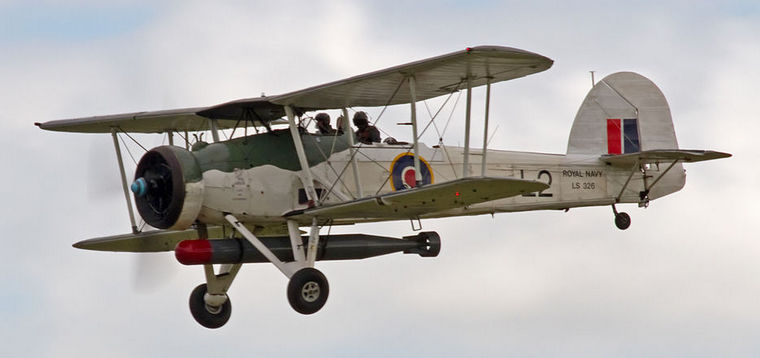 Fairey Swordfish. Photo © Tony Hisgett Originating in the 1930s, the Fairey Swordfish, a torpedo bomber biplane designed by the Fairey Aviation Company and used by the Fleet Air Arm of the Royal Navy during the Second World War, had its first flight on 7 April 1934. It was, by the start of the war in 1939, an outdated design but none the less remained in front-line service until VE Day. The Swordfish has the distinction of having conducted the first attack of the war by torpedo-carrying aircraft. The Swordfish, despite being obsolete, achieved some spectacular successes, the most famous of which is attack on the Bismarck, which contributed to her eventual demise. During the Battle of Taranto, Swordfishes sunk one battleship and damaged two others of the Regia Marina (the Italian Navy). On 3 July 1940, the Swordfish was one of the main weapons during the Attack on Mers-el-Kébir, an attack by the Royal Navy upon the French Navy fleet stationed at Oran, French Algeria to prevent the vessels falling into German hands. Twelve Swordfish from 810 and 820 Naval Air Squadrons launched from the aircraft carrier HMS Ark Royal, conducted three sorties of attacks upon the anchored fleet. The torpedo attack, which crippled the French battleship Dunkerque and damaged other vessels present, demonstrated that capital ships could be effectively attacked while in harbour; it was also the first time in history that the Royal Navy had won a battle without the use of gunfire. By the end of the war, the Swordfish held the distinction of having caused the destruction of a greater tonnage of Axis shipping than any other Allied aircraft. 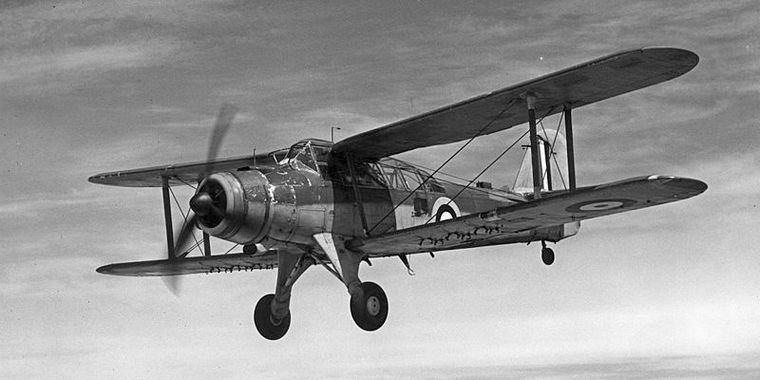 Fairey Albacore. Photo © en.wikipedia.org The Fairey Albacore was a British single-engine carrier-borne biplane torpedo bomber built by Fairey Aviation between 1939 and 1943 for the Royal Navy Fleet Air Arm and was used during the Second World War. It had a three-man crew and was designed for spotting and reconnaissance as well as level bombing, dive bombing and as a torpedo bomber. The Albacore, popularly known as the "Applecore", was conceived as a replacement for the aging Fairey Swordfish, which had entered service in 1936. However, the Albacore served with the Swordfish and was retired before it, being replaced by the Fairey Barracuda and Grumman Avenger monoplane torpedo bombers. 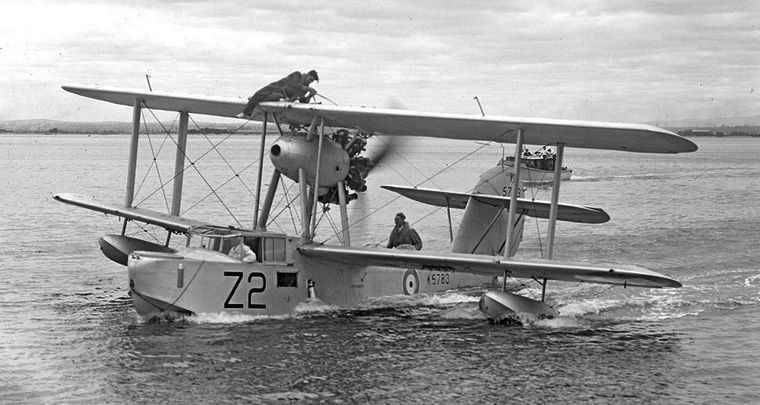 Supermarine Walrus. Photo © en.wikipedia.org Supermarine Walrus. Photo © en.wikipedia.orgIntroduced into service in 1935, the Supermarine Walrus was a British single-engine amphibious biplane reconnaissance aircraft designed by R. J. Mitchell. It was operated by the Fleet Air Arm (FAA) and also served with the Royal Air Force (RAF), Royal Australian Air Force (RAAF), Royal Canadian Air Force (RCAF), Royal New Zealand Navy (RNZN) and Royal New Zealand Air Force (RNZAF). It was the first British squadron-service aircraft to incorporate a fully retractable main undercarriage, completely enclosed crew accommodation and an all-metal fuselage. By the start of the Second World War, the Walrus was in widespread use. Although its principal intended use was gunnery spotting in naval actions, the Walrus's main task was patrolling for Axis submarines and surface-raiders. they also saw very limited use in bombing and strafing shore targets. The Walrus continued in service throughout the Second World War and continued to serve in a limited capacity with several militaries around the world during the postwar era.  de Havilland DH.82 Tiger Moth. Photo © Adrian Pingstone / commons.wikimedia.org The de Havilland DH.82 Tiger Moth, operated by the Royal Air Force (RAF) and others as a primary trainer, had its first flight on 26 October 1931. It was introduced into service the following year and served for the next 28 years and was retired in UK service only in 1959. Many other nations used the Tiger Moth in both military and civil applications, and it remains in widespread use as a recreational aircraft in many countries. It is still occasionally used as a primary training aircraft, particularly for those pilots wanting to gain experience in a biplane. 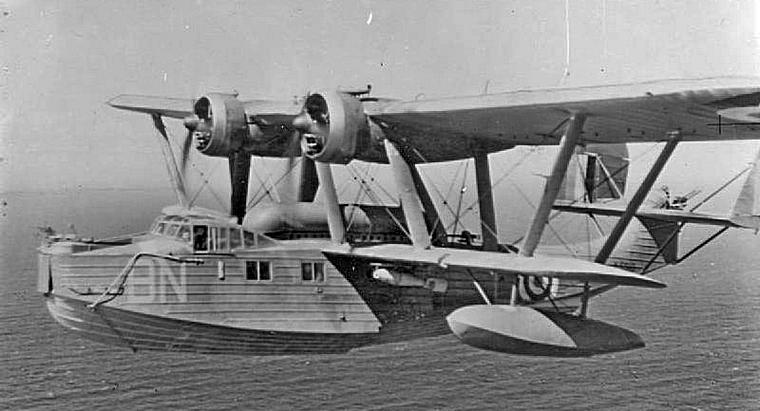 The Saunders Roe A.27 London. Photo © RAF / Imperial War Museums The British military biplane flying boat, the Saunders Roe A.27, of which only 31 were built, entered service in 1934. Although due for replacement by the outbreak of World War II, London's equipped 201 Squadron RAF, which was by now stationed at Sullom Voe in Shetland, and 202 Squadron RAF at Gibraltar. It was also used by 240 Squadron RAF at Invergordon, which had re-equipped with Londons in July 1939. These aircraft carried out active patrols over the North Sea and the Mediterranean. Some were fitted with a dorsal fuel tank to increase operational radius. Armament in the form of bombs, depth charges and naval mines up to a total weight of 2,000 lb (907 kg), could be carried beneath the lower wings.  The Supermarine Stranraer. Photo © Wikipedia.org The Supermarine Stranraer. Photo © Wikipedia.orgDesigned and built by the British Supermarine Aviation Works company principally for the Royal Air Force, the Supermarine Stranraer first flew on 24 July 1934 and was Introduced into service in 1937. Many were in service at the outbreak of the Second World War undertaking anti-submarine and convoy escort patrols. They were withdrawn from operational service in March 1941, but continued to serve in a training capacity until October 1942. In addition to the British-built aeroplanes, the Canadian Vickers company in Montreal, Quebec, built 40 Stranraers under licence for the Royal Canadian Air Force. The RCAF Stranraers served in anti-submarine and coastal defence capacities on both Canada's Atlantic and Pacific coasts. Many Canadian Stranraers were sold off to fledgeling regional airlines and they served in commercial passenger and freighter operation well into the 1950s. 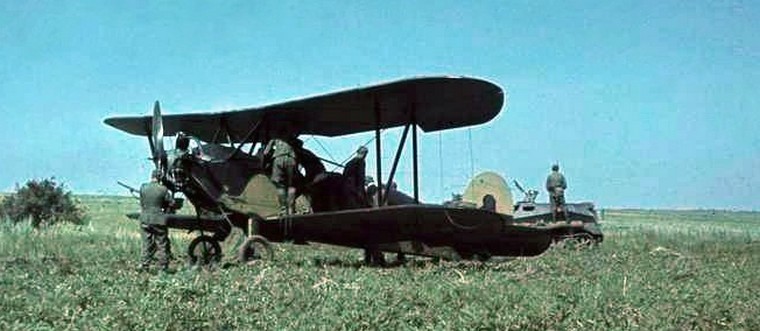 Polikarpov Po-2. Photo © Bundesarchiv The Polikarpov Po-2, which had its first flight on 24 June 1927, is one of the most produced aircraft and may well be the most produced biplane in the history of aviation. More than 40,000 Po-2s may have been built between 1928 and 1953. From the beginning, the U-2 became the basic Soviet civil and military trainer aircraft, mass-produced in a "Red Flyer" factory near Moscow. It was also used for transport and as a military liaison aircraft, due to its STOL capabilities. Although entirely outclassed by contemporary aircraft, the Po-2 served extensively on the Eastern Front in World War II, primarily as a liaison, medevac and general-supply aircraft. It was especially useful for supplying Soviet partisans behind the German front line. From 1942 it was adapted as a light night ground attack aircraft. The U-2 became known as the aircraft used by the 588th Night Bomber Regiment, composed of an all-woman pilot and ground crew complement. The unit was notorious for daring low-altitude night raids on German rear-area positions. North Korean forces used the Po-2 during the Korean War. A significant number of Po-2s were fielded by the Korean People's Air Force, inflicting serious damage during night raids on United Nations bases. www.youtube.com/channel/UCCuRVZAGodT6sztTeXBGeMw and subscribe to our YouTube channel  |
             |
 |
 |

Copyright © Pilot's Post PTY Ltd
The information, views and opinions by the authors contributing to Pilot's Post are not necessarily those of the editor or other writers at Pilot's Post.